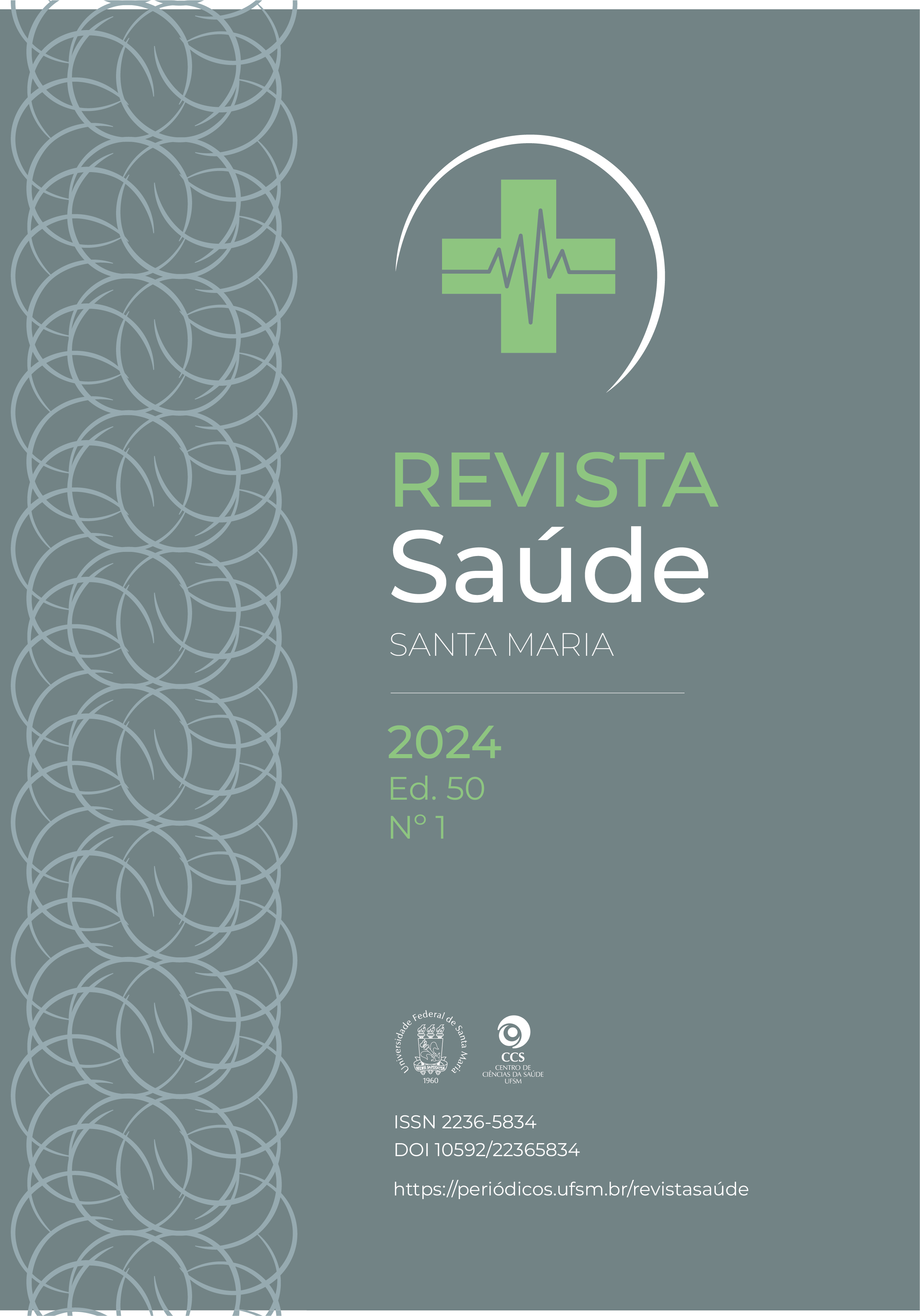Gigant inguinoscrotal hernia - case report
DOI:
https://doi.org/10.5902/2236583483692Keywords:
Inguinal Hernia, Pneumoperitoneum, Abdominal Compartimental Syndrome, HernioplastyAbstract
Large inguinal hernias are characterized by loss of domain in the abdominal cavity and the reduction of the content may result in abdominal hypertension characterized as compartment syndrome. The surgical correction
of this pathologies represent a chalenge by raised relapse index and local complications. The induction of preoperative progressive pneumoperitoneum (PPP) for surgical correction of a giant hernia in the inguinal region allowed
the return of the contents of the hernial sac to the abdominal cavity through an intraperitoneal catheter placement and subsequent room air insufflation.
A CT scan has been done to assess the relationship between the volume of the herniated content and the capacity of the abdominal cavity before and after pneumoperitoneum sessions. The present work related PPP technique
as an adjuvant to surgical correction by Lichtenstein’s technique, without consequente elevation of the intracavitary pressure, demonstrating the security and effectivenes of this methodo.
Downloads
References
REVISÃO BIBLIOGRÁFICA
Maranhão DDA, Simão AZ, Arruda ME, Lescher V, Mendonça MQ, Ferreira FG. Hérnia inguino-escrotal gigante - relato de caso. Arq Med Hosp Fac Cienc Med Santa Casa São Paulo. Set/Dez 2015; 60(3).
Cavalli M, Biondi A, Bruni PG, Campanelle G. Giant inguinal hernia: the challenging hug technique. Hernia. 2015;19:775-83.
Lima MJV, Silva AL. Pneumoperitônio. In: Lázaro-da-Silva A, editor. Hérnias. São Paulo, Rocca: 2006, p.171-174.
Alyami M, Passot G, Voiglio E, Lundberg PW, Valette PJ, Muller A et al. Feasibility of Catheter Placement Under Ultrasound Guidance for Progressive Preoperative Pneumoperitoneum for Large Incisional Hernia with Loss of Domain. World J Surg. 2015 Dec;39(12):2878-84.
Moreno IG. Chronic eventrations and large hernias; preoperative treatment by progressive pneumoperitomeum; original procedure. Surgery. 1947 Dec;22(6):945-53.
Steichen FM. A simple method for establishing, maintaining, and regulating surgically induced pneumoperitoneum in preparation for large hernia repairs. Surgery. 1965 Dec;58(6):1031-2.
Dumont F, Fuks D, Verhaeghe P, Brehant O, Sabbagh C, Riboulot M et al. Progressive pneumoperitoneum increases the length of abdominal muscles. Hernia. 2009 Apr;13(2):183-7.
Lipman J, Medalie D, Rosen MJ. Staged repair of massive incisional hernias with loss of abdominal domain: a novel approach. Am J Surg. 2008 Jan;195(1):84-8.
Bueno-Lledó J, Torregrosa A, Jiménez R, Tatay FC, Pastor PG et al. Preoperative preparation of «loss of domain» hernia. Progressive pneumoperitoneum and botulinum toxin type A. Cir Esp. 2017 May;95(5):245-253. English, Spanish.
Tang FX, Zong Z, Xu JB, Ma N, Zhou TC, Chen S. Combination of Preoperative Progressive Pneumoperitoneum and Botulinum Toxin A Enables the Laparoscopic Transabdominal Preperitoneal Approach for Repairing Giant Inguinoscrotal Hernias. J Laparoendosc Adv Surg Tech A. 2020 Mar;30(3):260-266.
Field M, Splevins A, Picaut P, van der Schans M, Langenberg J, Noort D, Snyder D, Foster K. AbobotulinumtoxinA (Dysport®), OnabotulinumtoxinA (Botox®), and IncobotulinumtoxinA (Xeomin®) Neurotoxin Content and Potential Implications for Duration of Response in Patients. Toxins (Basel). 2018 Dec 13;10(12):535. doi: 10.3390/toxins10120535. Erratum in: Toxins (Basel). 2019 Feb 13;11(2).
Farooque F, Jacombs AS, Roussos E, Read JW, Dardano AN, Edye M et al. Preoperative abdominal muscle elongation with botulinum toxin A for complex incisional ventral hernia repair. ANZ J Surg. 2016 Jan-Feb;86(1-2):79-83.
Rodriguez-Acevedo O, Elstner KE, Jacombs ASW, Read JW, Martins RT, Arduini F, Wehrhahm M, Craft C, Cosman PH, Dardano AN, Ibrahim N. Preoperative Botulinum toxin A enabling defect closure and laparoscopic repair of complex ventral hernia. Surg Endosc. 2018 Feb;32(2):831-839.
Bueno-Lledó J, Torregrosa A, Jiménez R, Pastor PG. Preoperative combination of progressive pneumoperitoneum and botulinum toxin type A in patients with loss of domain hernia. Surg Endosc. 2018 Aug;32(8):3599-3608.
Bueno-Lledó J, Torregrosa A, Ballester N, Carreño O, Carbonell F, Pastor PG et al. Preoperative progressive pneumoperitoneum and botulinum toxin type A in patients with large incisional hernia. Hernia. 2017 Apr;21(2):233-243.
Downloads
Published
Versions
- 2024-07-09 (5)
- 2024-07-09 (4)
- 2024-07-09 (3)
- 2024-07-09 (2)
- 2024-07-09 (1)
How to Cite
Issue
Section
License
Copyright (c) 2024 Sandra L O Machado, Eduardo Soares Machado

This work is licensed under a Creative Commons Attribution-NonCommercial-NoDerivatives 4.0 International License.
A Declaração de Direito Autoral e os itens a serem observados podem ser visualizados no seguinte link: http://cascavel.ufsm.br/revistas/ojs-2.2.2/index.php/seculoxxi/information/sampleCopyrightWording





